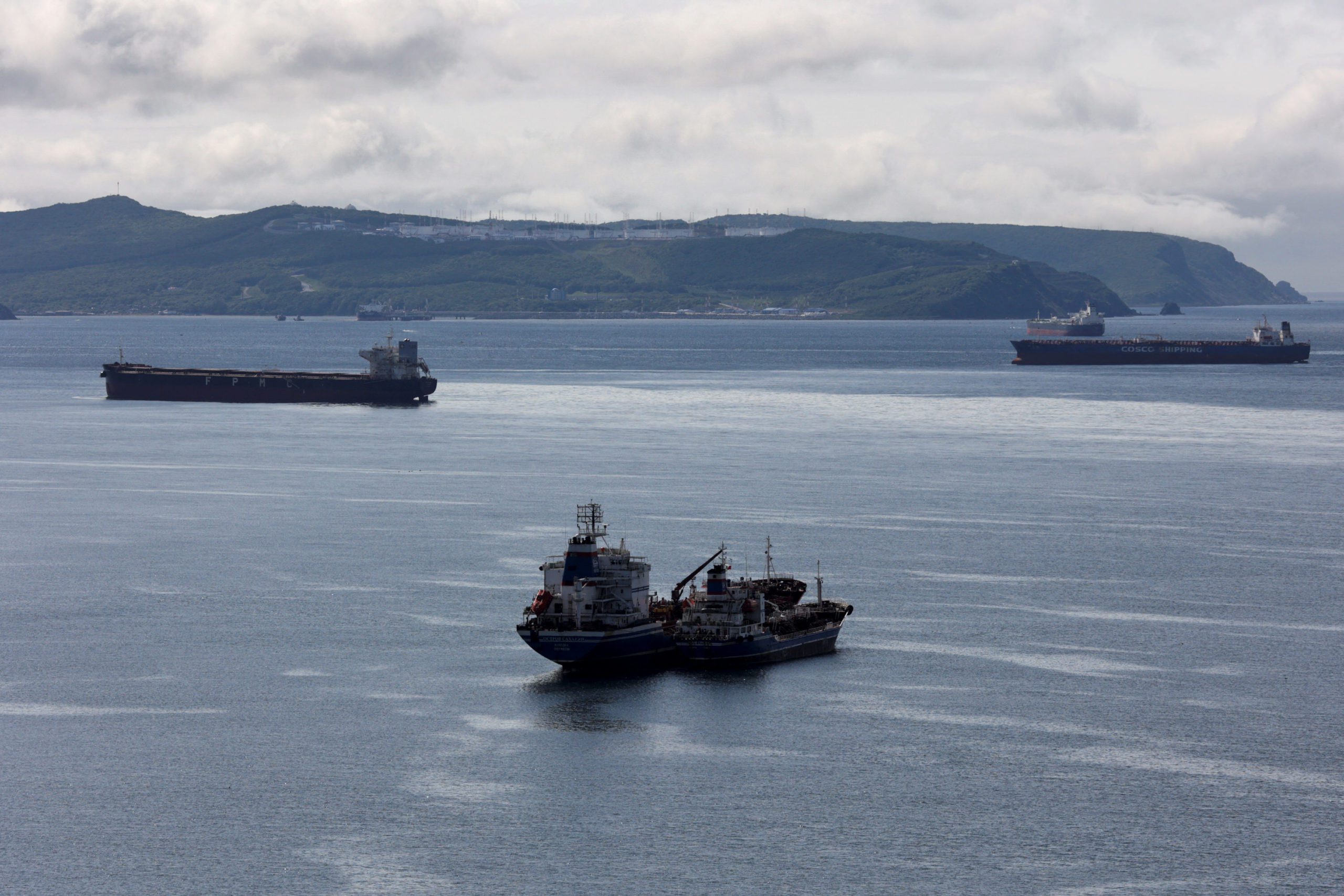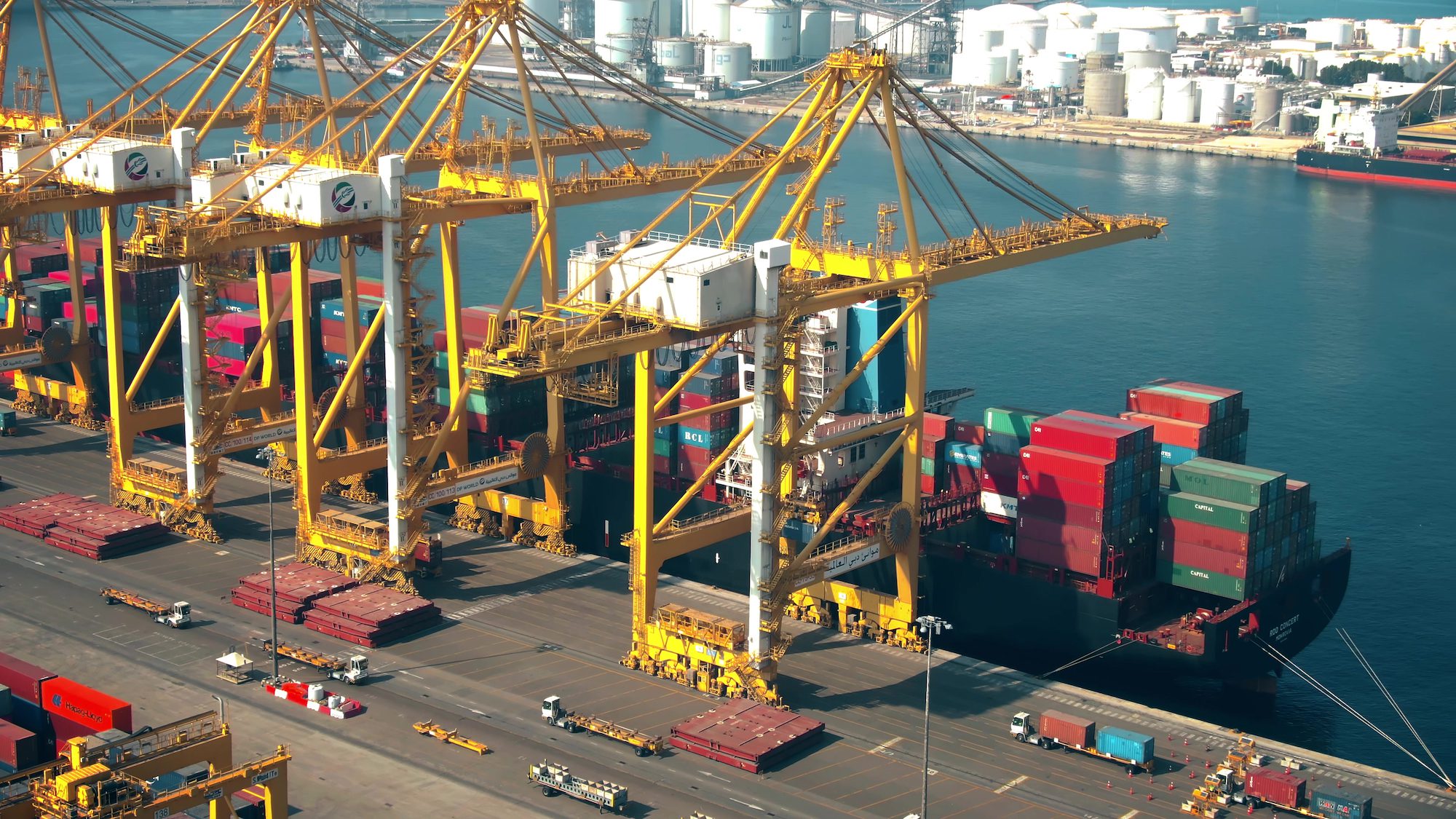By Julian Lee (Bloomberg) —
Russian crude oil flows to international markets still show no sign of the output cuts the country insists it is making.
Four-week average seaborne shipments, which smooth out some of the volatility in weekly numbers, rose for a sixth straight week in the period to May 19, edging close to 4 million barrels a day. Flows are now up by 15% since the first week of April and hit a new high for the period since Bloomberg began tracking them in detail at the start of 2022. With almost all Russia’s crude going to China and India, volumes to Asia also climbed to a new peak. More volatile weekly flows edged lower.
Russia pledged to cut oil production by 500,000 barrels a day in March, using February output as a baseline, in retaliation for Western sanctions and price caps on its oil exports designed to punish Moscow for the invasion of Ukraine. Those cuts were subsequently extended for the rest of the year, in line with voluntary reductions made by several of Russia’s OPEC+ partners. Russia continues to stress its commitment to the OPEC+ producer group and the output reductions that the group has agreed.
“All our actions, including those related to voluntary production cuts, are connected with the need to support a certain price environment on global markets in contact with our partners in OPEC+,” President Vladimir Putin said at a meeting with his government via video-link on Wednesday.
There is little evidence, though, that the cuts have been implemented as promised. Crude flows to international markets continue to rise and are now more than 1.2 million barrels a day higher than they were at the end of last year. Some of that increase can be attributed to the diversion of crude previously piped to Germany and Poland through the Druzhba pipeline; but that happened in January and February, before the output cut was due to come into effect. The remainder may reflect lower domestic refinery runs during a period of seasonal maintenance.
Some analysts have suggested that Russia may have tapped stockpiles to maintain flows, but the country has limited storage capacity at its ports, while tanks at fields, refineries and pump stations are needed for their normal operation, making it unlikely that they could be used in this way for long.
Despite the rising crude flows out of the country, a Group of Seven cap on the price of Russian oil is successfully choking off the nation’s access to petrodollars, according to the US Treasury Department, after Moscow acknowledged “problems” with government revenue.
Russia’s reliance on a shadow fleet of aging tankers to carry its oil to remaining large buyers — notably India and China — may be starting to encounter difficulties. A major port in China is stepping up checks on older vessels, snarling some cargoes and highlighting concerns around the steady expansion of this group of vessels.
Russia’s Lifelines
The combined volume of crude on vessels heading to China and India plus smaller flows to Turkey and quantities on ships that haven’t yet shown a final destination rose to a new high of 3.81 million barrels a day in the latest four-week period, the highest since Bloomberg began tracking the flows in detail at the start of 2022.
As the ultimate destinations of cargoes loading in late January became apparent, flows to China rose to new post-invasion highs, and remained close to those levels in February and the first weeks of March. Historical patterns suggest that most of the vessels currently signaling “Unknown Asia” destinations and heading for the Suez Canal will end up in India, while those loaded onto very large crude carriers off the north coast of Morocco or, more recently, in the Atlantic Ocean, will head to China.
Crude Flows by Destination
On a four-week average basis, overall seaborne exports in the period to May 19 were up by 106,000 barrels a day to 3.9 million barrels a day, the highest since Bloomberg began tracking the flows in detail at the beginning of 2022. More volatile weekly flows fell by about 150,000 barrels a day to 3.82 million barrels a day from a revised 3.97 million barrels a day the previous week.
Weekly data are affected by the scheduling of tankers and loading delays caused by bad weather. Port maintenance can also disrupt exports for several days at a time.
All figures exclude cargoes identified as Kazakhstan’s KEBCO grade. Those are shipments made by KazTransoil JSC that transit Russia for export through the Baltic ports of Ust-Luga and Novorossiysk.
The Kazakh barrels are blended with crude of Russian origin to create a uniform export grade. Since Russia’s invasion of Ukraine, Kazakhstan has rebranded its cargoes to distinguish them from those shipped by Russian companies. Transit crude is specifically exempted from European Union sanctions.
Four-week average shipments to Russia’s Asian customers, plus those on vessels showing no final destination, rose to 3.61 million barrels a day in the period to May 19.
While the volumes heading to India appear to have declined from recent highs, history shows that most of the cargoes on ships without an initial destination eventually end up there or in China.
The equivalent of 502,000 barrels a day was on vessels showing destinations as either Port Said or Suez in Egypt, or which already have been or are expected to be transferred from one ship to another off the South Korean port of Yeosu. Those voyages typically end at ports in India or China and show up in the chart below as “Unknown Asia” until a final destination becomes apparent.
The “Other Unknown” volumes, running at 257,000 barrels a day in the four weeks to May 19, are those on tankers showing no clear destination. Most of those cargoes go on to transit the Suez Canal, but some could end up in Turkey, while other cargoes end up being transferred from one vessel to another, either in the Mediterranean or, more recently, in the Atlantic Ocean.
Russia’s seaborne crude exports to European countries fell to 63,000 barrels a day in the 28 days to May 19, with Bulgaria the sole destination. These figures do not include shipments to Turkey.
A market that consumed more than 1.5 million barrels a day of short-haul crude, coming from export terminals in the Baltic, Black Sea and Arctic has been lost almost completely, to be replaced by long-haul destinations in Asia that are much more costly and time-consuming to serve.
No Russian crude was shipped to northern European countries in the four weeks to May 19.
Exports to Turkey, Russia’s only remaining Mediterranean customer, were stable at 203,000 barrels a day in the four weeks to May 19.
Flows to Bulgaria, now Russia’s only Black Sea market for crude, fell to 63,000 barrels a day, equaling their lowest since March 2022.
Flows by Export Location
Aggregate flows of Russian crude slipped to 3.82 million barrels a day in the seven days to May 19, from a revised 3.97 million barrels a day the previous week. A drop in shipments from the Black Sea was partly offset by higher flows from the Arctic. The volumes leaving the Baltic and Pacific ports were unchanged from the previous week.
Figures exclude volumes from Ust-Luga and Novorossiysk identified as Kazakhstan’s KEBCO grade.
Export Revenue
Inflows to the Kremlin’s war chest from its crude-export duty fell by $1 million to $52 million in the seven days to May 19 from a revised figure for the previous week. Four-week average income rose by $1 million to $53 million.
The duty rate for May is $1.96 a barrel, based on a Urals price of $51.15 a barrel between March 15 and April 14. The rate for June has been set at $2.21 a barrel, based on an average Urals price of $55.97, which was $23.90 a barrel below Brent during the period between April 15 and May 14.
Origin-to-Location Flows
The following charts show the number of ships leaving each export terminal and the destinations of crude cargoes from the four export regions.
A total of 35 tankers loaded 26.7 million barrels of Russian crude in the week to May 19, vessel-tracking data and port agent reports show. That’s down by 1.05 million barrels, or 4% from the previous week’s revised figure. Destinations are based on where vessels signal they are heading at the time of writing, and some will almost certainly change as voyages progress. All figures exclude cargoes identified as Kazakhstan’s KEBCO grade.
The total volume on ships loading Russian crude from Baltic terminals was unchanged, running at 1.77 million barrels a day for a fourth week.
Shipments of Russian crude from Novorossiysk in the Black Sea fell to a four-week low of 334,000 barrels a day. Two cargoes of Kazakhstani crude was also loaded at the port during the week.
Arctic shipments jumped to equal their record weekly total of 571,000 barrels a day, with four Suezmax tankers loading in the week to May 19.
Eleven tankers loaded at Russia’s three Pacific export terminals, unchanged from the revised number for the previous week.
The volumes heading to unknown destinations are mostly Sokol cargoes that recently have been transferred to other vessels at Yeosu, or are currently being shuttled to an area off the South Korean port from the loading terminal at De Kastri. Most of these are also ending up in India.
Some Sokol cargoes are now being transferred a second time in the waters off southern Malaysia. A small number of ESPO shipments are also being moved from one vessel to another in the same area. All of these cargoes have, so far, gone on to India.
Note: This story forms part of a regular weekly series tracking shipments of crude from Russian export terminals and the export duty revenues earned from them by the Russian government.
Note: All figures exclude cargoes owned by Kazakhstan’s KazTransOil JSC, which transit Russia and are shipped from Novorossiysk and Ust-Luga as KEBCO grade crude.
Note: The next update of this story will be published on Tuesday May 29. From then on we will be moving regular publication of this story to Tuesday, with the weeks running from Monday to Sunday. Historical data will be revised accordingly.
–With assistance from Sherry Su.
© 2023 Bloomberg L.P.

 Join The Club
Join The Club











